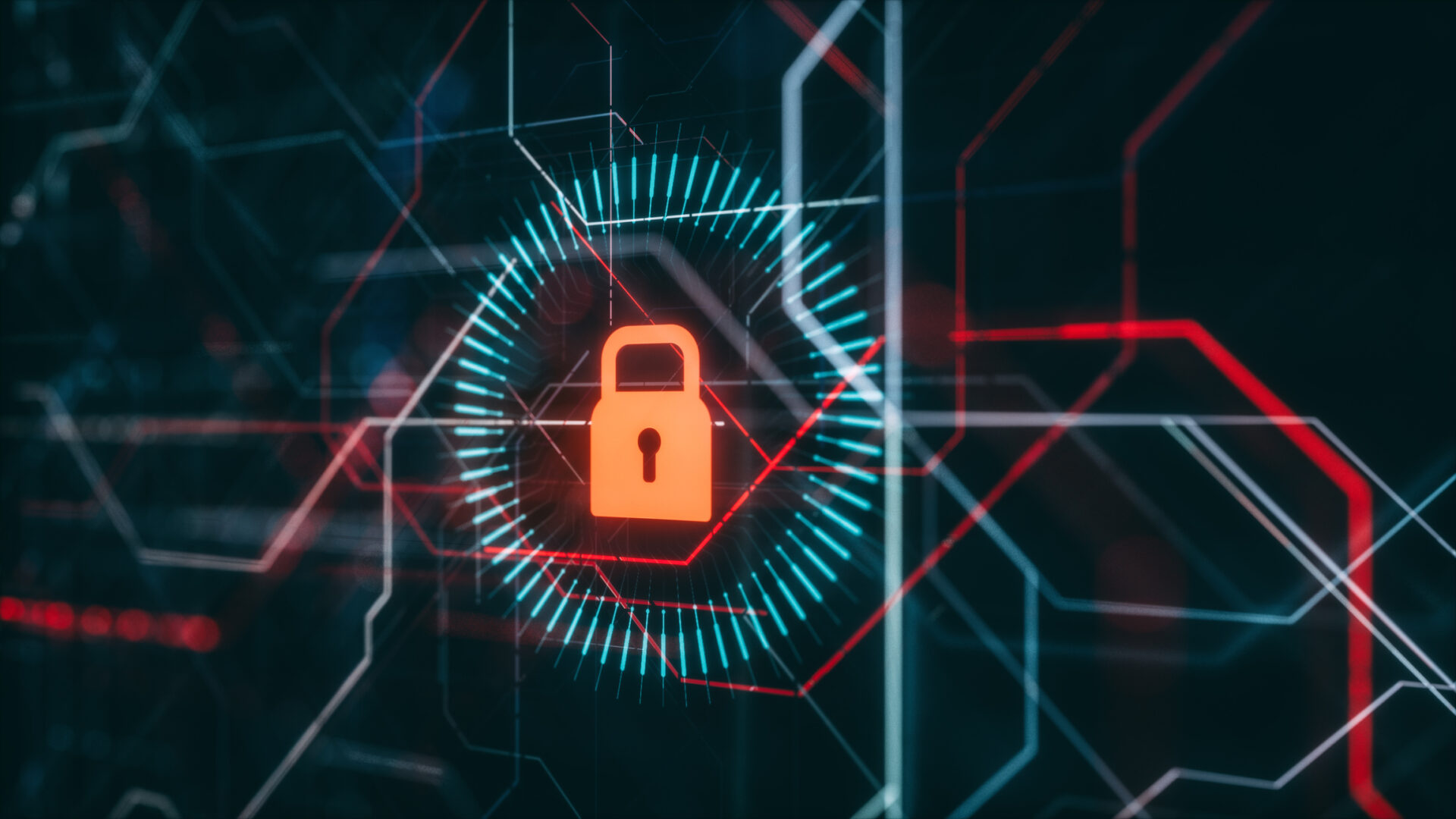 Two recent high-profile breaches—Intercontinental Hotels Group and Uber—demonstrate the criticality of securing your identities. Both of these attacks started with a social engineering attack. One started with traditional business email compromise (BEC), and the other started with MFA push bombing. The next stage of both attacks compromised the password/secrets vault.
Two recent high-profile breaches—Intercontinental Hotels Group and Uber—demonstrate the criticality of securing your identities. Both of these attacks started with a social engineering attack. One started with traditional business email compromise (BEC), and the other started with MFA push bombing. The next stage of both attacks compromised the password/secrets vault.
Cybersecurity & Networking
-
-
Research Objectives
Examine the people, processes, and technology supporting the modernization of security operations. Identify key value points, the metrics to back up those value points, and what’s expected from both products and managed services for XDR and SOC modernization. Determine current perception and role of XDR as a component of security operations modernization efforts. Explore strategies used to automate triage, speed investigations, and help organizations find unknown threats.
-
 Organizations are increasingly moving applications to the cloud to better serve their customers, partners, and employees. The ability to quickly deploy applications to the cloud so employees, partners, and customers can connect to companies for business transactions and services gives organizations a competitive advantage. This makes maintaining security posture more important than ever, as increasing the availability of products and services connected to company and customer data increases exposure to attacks. Cloud security posture management (CSPM) is key to mitigating security risk while enabling the use of innovative cloud technologies that drive better business results.
Organizations are increasingly moving applications to the cloud to better serve their customers, partners, and employees. The ability to quickly deploy applications to the cloud so employees, partners, and customers can connect to companies for business transactions and services gives organizations a competitive advantage. This makes maintaining security posture more important than ever, as increasing the availability of products and services connected to company and customer data increases exposure to attacks. Cloud security posture management (CSPM) is key to mitigating security risk while enabling the use of innovative cloud technologies that drive better business results. -
The need to collect and analyze data generated at edge locations is playing an increasingly important role in enabling organizations to improve quality, deliver enhanced experiences (both customer and employee), and gather deeper insights into the business. To understand how IT organizations are leveraging and optimizing their use of important edge sites, Enterprise Strategy Group surveyed IT professionals responsible for their organization’s edge computing applications, tools, policies, and procedures.
For more information or to discuss these findings with an analyst, please contact us.
-
 There are many different cybersecurity categories, and it seems that a new category is created every minute. If you’re paying attention to cloud security, you may have seen or heard about DSPM—data security posture management.
There are many different cybersecurity categories, and it seems that a new category is created every minute. If you’re paying attention to cloud security, you may have seen or heard about DSPM—data security posture management. -
This episode of Women in Cybersecurity features Wendy Thomas, President and CEO of Secureworks, a leading cybersecurity company that helps its global customers build effective cybersecurity programs with innovative technology and professional services. With a mathematical background in economics and finance, she found that the field of cybersecurity provides a rewarding trifecta: the opportunity to work globally across cultures and geographies, intellectually stimulating work using innovative technology; and the ability to make a positive impact.
Her leadership includes diversity and inclusion initiatives to reflect the global markets Secureworks serves, and she is an advocate for childhood cyber literacy, starting as early as elementary schools.
Don’t miss her video below.
Wendy’s background and education was in economics and finance, with an early career in the commodities exchange business at the Chicago Board of Trade. She pointed out that she spent time in the trading pits, which are gone now thanks to disruptive technology moving into online trading. This swiftness with which technologies are replaced in the interest of speed and productivity has driven Wendy’s career to move to areas of innovation.
After she went to business school, Wendy saw a similar pattern at Bell South, where the business moved from land lines and telephone services into cellular and DSL technologies. She said the rapid pace of innovation, with the need to cannibalize and innovate, set her up well for cybersecurity.
“Cybersecurity requires the same, or even faster, pace of constant innovation to stay ahead of both the threat and the adversary,” she said.
Wendy originally joined SecureWorks to build out their finance and investor relations program to prep them for their IPO. She later became Chief Product Officer to align their product line with customer needs to invest in security to stay ahead of their adversaries.
“Cybersecurity is all about risk and return. If you think about a business trying protect assets, or individuals trying to protect their identities or their bank accounts, it’s all about how much are you willing to invest to reduce that risk and that exposure. We help customers make the right investments in security.”
Secureworks offers its Taegis XDR platform, along with managed services and vendor partnerships, to help customers build effective security strategies to keep their adversaries out.
“We take an open approach that’s vendor-inclusive. That starts with the customer…working together with existing security point products inside their infrastructure, bringing Teagis XDR to bring it all together in a world of security working together to keep customers safe and safely evolve over time,” she said.
As part of her dynamic leadership, Wendy promotes diversity and inclusivity at Secureworks with a number of initiatives and programs. In order to increase representation of women in their global workforce, she has set a goal to have women make up 50% of their global workforce and 40% of people leaders by 2030. In just the past year, they have gone from 26% to 34% women in their global workforce and have increased their amount of female people leaders from 20% to 24%. Be sure to listen to the podcast to learn about the efforts they are making to promote diversity and inclusivity among employees and suppliers, and check out their page on corporate responsibility.
Here is Wendy’s list of recommended resources:
Podcasts:
- WorkLife with Adam Grant
- MacroMusings with David Beckworth
- CIS (Center for Internet Security) Podcasts
- Smashing Security
- CyberWire Daily
- Cyber CEOs Decoded with Marc van Zadelhoff
Writers/Articles/Journals
- Tiernan Ray , The Technology Letter
- Women in Security Magazine
- James Rundle, Wall Street Journal
- Geoff White, BBC
- Jen Easterly, Director CISA
Be sure to check out Wendy’s video below.
Be sure to visit Enterprise Strategy Group’s Women in Cybersecurity page, where you can view past episodes and connect with us to hear more inspiring stories in future shows.
-
Research Objectives
Organizations are distributing applications across multiple public cloud environments and edge locations. This is driven by the need to collect and analyze the data generated at these remote sites to enable organizations to improve quality, deliver enhanced experiences (both customer and employee), and gather deeper insights into the business. Because the “edge” can be defined in many ways depending on several factors, such as company size and industry, organizations employ a range of strategies and an ecosystem of partners that includes cloud service providers, telecommunication companies, colocation providers, and even traditional technology vendors to ensure robust edge computing environments that deliver critical business insights.
-
Research Objectives
Understand the current state of the edge computing environment, including budgets and prioritization. Determine the key drivers, challenges, benefits, and use cases for edge computing. Get an accurate picture of edge infrastructure, network, security, and data environments. Identify vital players and their roles/influence for enabling edge environments.
-
My colleague John Grady completed a new research report on Trends in Modern Application Protection. It covers how organizations are modernizing their application architectures and the challenges they are seeing in web application and API protection platforms. In this video, we discuss some of his findings on API security. Watch the video below to learn about:
- The growth of APIs
- Challenges and methods to secure them
- API incidents that organizations have experienced and their impacts
- Methods of remediating API coding errors and their effectiveness
- What to look for in an API protection platform
Watch the video below, and be sure to check out the new research: Trends in Modern Application Protection.
-
 As ransomware actors have gained in experience and sophistication, they’ve adopted new tactics. Before encrypting your data, they exfiltrate it. This way, they can make you pay twice–first for an encryption key, and second, an extortion fee to prevent the attacker from publishing your sensitive data.
As ransomware actors have gained in experience and sophistication, they’ve adopted new tactics. Before encrypting your data, they exfiltrate it. This way, they can make you pay twice–first for an encryption key, and second, an extortion fee to prevent the attacker from publishing your sensitive data.Data security encompasses the principles and practice of ensuring legitimate access and preventing unauthorized access to data to preserve the cybersecurity triad of confidentiality, integrity, and access (CIA). A data security platform that enables you to discover, classify, and protect your sensitive data can stop a ransomware attacker from data exfiltration and limit your exposure to extortion.
-
 Easy-to-remember passwords are easy to crack. Strong passwords are hard to remember,
Easy-to-remember passwords are easy to crack. Strong passwords are hard to remember,
leading to password reuse and the risk of password compromise that causes multiple account takeovers. Passwords are risky business.Multifactor authentication (MFA) is a way to combat the inherent weaknesses of passwords. Yet MFA is also susceptible to compromise. Passwordless authentication based on the FIDO standards and public key encryption is the new archetype for authentication, and is phishing- and compromise-resistant.
-
This episode of Women in Cybersecurity features my dear friend, Laurie Haley, VP of Strategic Alliances at application security company Veracode. I first met Laurie when we worked together at Qualys, where she was a superstar sales leader who had a technical background. She got her start in tech support, moving into network engineering, and then into cybersecurity roles at VeriSign and SecureWorks. Then she worked at CVS doing vulnerability management before moving to Qualys, where she spent nearly nine years, including serving as Executive VP of Worldwide Field Operations. Now she heads up strategic alliances for Veracode. With her technical background and her understanding of customer needs, she is passionate about helping them solve their biggest cybersecurity challenges with effective solutions.
Don’t miss her video below.
Laurie got her start in tech support and network engineering, but has been in cybersecurity since 2007 because it’s such a rewarding field.
“What really was important to me was I wanted to do something with my career that was interesting and I was talented at, but was going to make an impact.”
After working at CVS in vulnerability management, she moved to Qualys, a company known for hiring practitioners on their sales team. “Here I was with this opportunity to take that background and bring in another skill set that I have – which is working with people, communication, negotiation – and bringing to focus helping people, working with clients, helping them do what I did at CVS.”
I have great memories of working with Laurie there, getting her perspective for product releases and working with her on customer case studies.
Now, Laurie is running strategic alliances for Veracode, working on technical integrations to benefit their customers. “I’m taking my hands-on experience to help Veracode align itself with technologies and companies that will help them overcome their challenges.”
I love our industry for the people I meet, and Laurie is one of my favorites. She gave me tips and advice when I was pregnant with my son, as we share aspirations of being powerhouse career women while raising our families. In addition to being a superstar at work, she’s a mother of four.
“I’m a mother of four. It’s a challenge to be a professional at my level in a very fast-paced business in an industry that requires a lot of involvement and effort. I have got to have people who can help me out. So asking for help to be able to balance everything so you can achieve your goals is a really important piece of advice that was hard-learned for me.”
Laurie said the Executive Women’s Forum has been a big part of her journey. “They are one of the biggest groups to support women in cyber, and I’m a part of their mentor program,” she said. “They’re focused on supplying the networking forums that all of us women in this business can use to figure out challenges and help each other get ahead. And there’s the mentor program bringing up young professionals so that they can take over for us someday when we retire.”
Be sure to check out Laurie’s video below. Also, check out the Executive Women’s Forum: https://www.ewf-usa.com/ and connect with Laurie on LinkedIn.
Be sure to visit Enterprise Strategy Group’s Women in Cybersecurity page, where you can also find a link to the full audio interview with Laurie where we discuss this and much more. You can also view past episodes and connect with us to hear more inspiring stories in future shows.

 Organizations are increasingly moving applications to the cloud to better serve their customers, partners, and employees. The ability to quickly deploy applications to the cloud so employees, partners, and customers can connect to companies for business transactions and services gives organizations a competitive advantage.
Organizations are increasingly moving applications to the cloud to better serve their customers, partners, and employees. The ability to quickly deploy applications to the cloud so employees, partners, and customers can connect to companies for business transactions and services gives organizations a competitive advantage.  There are many different cybersecurity categories, and it seems that a new category is created every minute. If you’re paying attention to cloud security, you may have seen or heard about DSPM—data security posture management.
There are many different cybersecurity categories, and it seems that a new category is created every minute. If you’re paying attention to cloud security, you may have seen or heard about DSPM—data security posture management.  As ransomware actors have gained in experience and sophistication, they’ve adopted new tactics. Before encrypting your data, they exfiltrate it. This way, they can make you pay twice–first for an encryption key, and second, an extortion fee to prevent the attacker from publishing your sensitive data.
As ransomware actors have gained in experience and sophistication, they’ve adopted new tactics. Before encrypting your data, they exfiltrate it. This way, they can make you pay twice–first for an encryption key, and second, an extortion fee to prevent the attacker from publishing your sensitive data. Easy-to-remember passwords are easy to crack. Strong passwords are hard to remember,
Easy-to-remember passwords are easy to crack. Strong passwords are hard to remember,